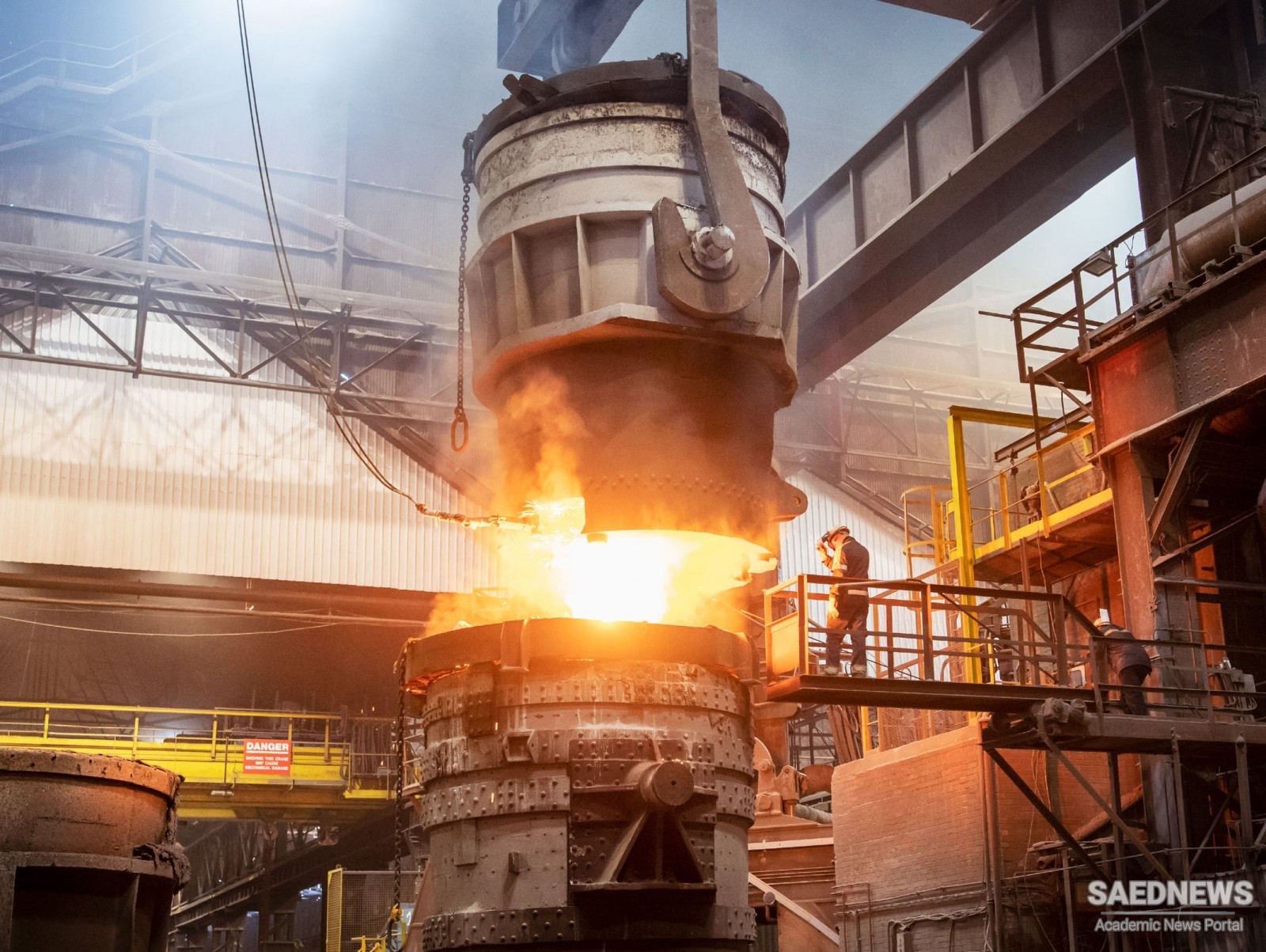The small teams of men needed to work the bloomeries were largely interchangeable and could do most, if not all, of the jobs. As the blast furnace processes became more mechanized, so specialist workmen became essential. Of course there was still plenty of work for an unskilled labourer: the man who loaded barrows with iron ore and coke and wheeled them to the furnace could just as easily wheel barrowloads of pig iron away from it. But a large blast furnace plant of the early nineteenth century needed steam engine drivers; blacksmiths, to make and repair tools; mechanics and engineers to keep the machinery in order; and many more trades as well. In an integrated works the number of specialized craftsmen were even greater. All these were needed in addition to the men who worked at charging and tapping the blast furnaces, at the puddling furnaces and at the rolling mills on the actual manufacture and shaping of iron. As the ironmaking centres developed into complex organizations of craftsmen in many trades, specialization among the workers arrived.
Expansion in ironmaking, and in all the other industries in which iron played its part, soon began to have outside effects, among which the need for better communications was particularly strong, Improvement of roads was the first development, from the middle of the eighteenth century onwards Ironmakers took no significant part in this, but they did to some extent make use of the better facilities. Areas such as the Black Country and South Wales were a long way from the established commercial centres like London and Bristol, so any improved way of transporting the iron was welcomed. Water transport was used as much as possible, but it was still necessary to get the iron to a seaport or to a navigable river. Most of the Shropshire ironworks were fairly close to the River Severn, and the ironworks of South Wales were relatively near the sea, but the rapidly-developing Black Country was a long way from both rivers and sea.
When an ironworks was a short distance from water transport it was often connected by means of a tramway with wooden rails and wagons hauled by horses. The iron industry was not the inventor of tramways, nor the only user of them, but it was responsible for the iron rail. Richard Reynolds, a Shropshire ironmaster, experimented with cast-iron rails in the Coalbrookdale area in 1767 and by 1785 he claimed to have over 32km (20 miles) of iron tramways. In this development we can see the beginnings of the railway age.
The other great transport system which grew up in the second half of the eighteenth century was the canal (see Chapter 9). The first Midland canal, the Staffordshire and Worcestershire, built under an Act of Parliament of 1766, passed outside the coal and iron areas of the Black Country but it was not long before a connection was made, and canals were constructed in the Black Country itself from 1769 onwards. This form of transport was vital to the rapidly expanding iron industry.
Ironfounders were acquiring new skills. Developing industries wanted bigger castings and more complex shapes, steam engine cylinders and valve gears, for example. Many other kinds of machinery called for castings which had to be accurate as well as of complicated shape. Mining, too, called for quantities of iron castings, especially in the form of pipes for pumping water to the surface. So did a new industry, gas manufacturing. William Murdock had shown that an inflammable gas could be made by heating coal in a closed retort. An ideal material for making the retorts and for the main gas pipes was cast iron. Steam engines generally were originally made largely of wood with the stonework or brickwork of the building playing an important structural part, and with iron only where it was essential. By the early 1800s iron had replaced wood. So new skills were coming into the iron trade to match the developing skills of the engineers whose main material of construction was now iron.
Inventors and improvers were active in the iron trade as elsewhere. The puddling process, for instance, was made more efficient in about 1816, when Joseph Hall, of Tipton, Staffordshire, introduced a method which was soon to supersede Cort’s, not only in Britain but in every other industrial country. The older method, dry puddling, lingered on in places, like the old charcoal blast furnace—indeed, it could be found, rarely, in living memory—but for all practical purposes Hall’s process quite quickly became the standard one as long as wrought iron was made.


 The Vital Role of Steel in Technological Development
The Vital Role of Steel in Technological Development














































